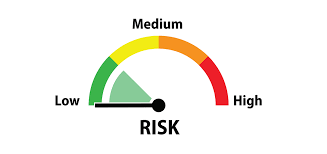Introduction
Investing is an essential part of building long-term financial security, but many investors hesitate due to the risks involved. While high-risk investments promise significant returns, they also come with the potential for substantial losses. Low-risk investing offers a balanced approach, allowing investors to protect their capital while still generating steady returns. By following strategic low-risk investment methods, individuals can grow their wealth over time without unnecessary exposure to market volatility.
1. Understanding Low-Risk Investing
Low-risk investing focuses on capital preservation and steady returns rather than rapid growth. The key principles of this approach include:
- Diversification – Spreading investments across different asset classes to reduce risk.
- Stable income generation – Choosing investments that provide consistent earnings over time.
- Long-term strategy – Holding assets for extended periods to maximize compounded growth.
By applying these principles, investors can build a reliable financial foundation while minimizing losses.
2. Investing in Government Bonds
Government bonds are one of the safest investment options because they are backed by national governments. These bonds offer fixed interest payments, making them ideal for conservative investors. Popular government bond options include:
- U.S. Treasury Bonds – Considered a risk-free investment with guaranteed returns.
- Municipal Bonds – Issued by state and local governments, often tax-exempt.
- Savings Bonds – Designed for long-term growth with low volatility.
Government bonds provide stable and predictable income, making them an excellent choice for risk-averse investors https://dluhopis.eu/.
3. Choosing Dividend-Paying Stocks
While stocks are generally riskier than bonds, dividend-paying stocks offer a lower-risk way to benefit from market growth. These stocks belong to established companies that regularly share profits with investors. Some well-known dividend-paying companies include:
- Procter & Gamble
- Johnson & Johnson
- Coca-Cola
- Microsoft
Dividend stocks provide passive income, helping investors maintain steady cash flow even during market downturns.
4. Real Estate Investments for Passive Income
Real estate is a low-risk investment that can generate long-term wealth. Investors can benefit through:
- Rental Properties – Provide a reliable monthly income from tenants.
- Real Estate Investment Trusts (REITs) – Allow investors to earn from real estate without property ownership.
Real estate investments offer asset appreciation and stable rental income, making them a solid wealth-building strategy.
5. Diversification with Index Funds and ETFs
Index funds and Exchange-Traded Funds (ETFs) offer investors a low-risk way to participate in the stock market. These funds track major indices like the S&P 500, ensuring diversification and steady returns. Benefits include:
- Low fees compared to actively managed funds.
- Market-wide exposure reduces individual stock risk.
- Long-term growth potential with reduced volatility.
Index funds and ETFs are ideal for passive investors looking for steady market returns with minimal risk.
Conclusion
Maximizing returns through low-risk investing requires strategic planning and diversification. By investing in government bonds, dividend stocks, real estate, and index funds, investors can achieve financial stability and long-term wealth growth while minimizing risk. While these methods may not promise quick gains, they provide a reliable path to financial success with minimal market exposure.



